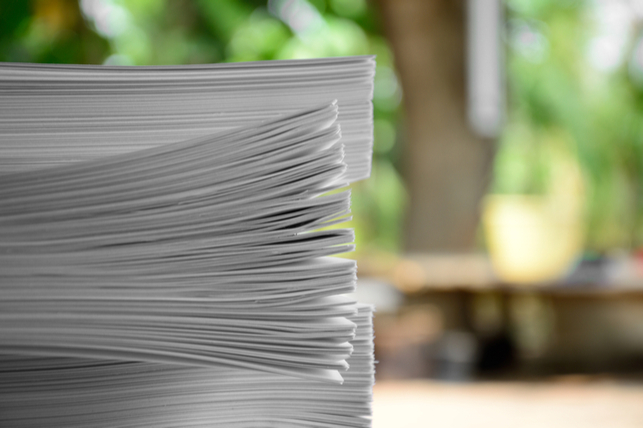When choosing your printed product, it’s important to consider paper weight and the type of paper. Both will play a big part in the look and feel of the final result. The right paper can help create that crucial first impression before your customer even starts to read the messaging.
The quality of the paper you choose will also be a reflection of your company. If you’re setting the standard for a great service with excellent products, reinforce those values with promotional materials that mirror your attention to quality.
But what is paper weight and how is paper weight determined? We look more closely at what it means and at the best uses for different types of paper according to their thickness and weight. Our guide will give you an idea of the options and range available to you as you design your perfect printed promotion.
What does GSM paper mean?
Paper is measured in grams per square metre (GSM). The higher the GSM, the heavier and thicker the paper. There are varying weights of GSM paper, meaning you can find the right one for a number of different applications.
Choosing GSM paper thickness
It’s easier to understand what different paper thickness might feel like if you start with an awareness of the thickness of a standard piece of paper. For example, a typical office paper, used in a copier or printer, would be around 90gsm.
Common GSM paper weights are:
- 80gsm
- 90gsm
- 100gsm
- 120gsm
- 130gsm
- 150gsm
- 170gsm
Any paper weight of 170gsm and over is known as board. A second measure is used to indicate the thickness of the sheet. This measurement is given in microns where 1 micron = 1/1000 of a millimetre.
Common board weights:
| GSM Paper weight | 200gsm | 250gsm | 300gsm | 350gsm | 400gsm |
| GSM Paper thickness | 150 to 220mics | 190 to 285mics | 237 to 342mics | 284 to 395mics | 315 to 460mics |
Which paper weight suits you best?
With paper weight explained, it’s also useful to get an understanding of the different types of paper available based on their weight. These examples will guide you to finding the paper weight that suits you best.
90-120gsm
Everyday office copier and printer paper tends to be 80-100gsm. While stationery such as letterheads and compliment slips are usually printed on 100-120gsm paper. This commonly used paper, known as offset paper, takes colour well due to its high brightness and uncoated rough surface and can be printed and written on over and over again.
130-170gsm
This type of paper provides the best paper weight for posters and the UV resistance. It’s also suitable for outdoor use with its hardwearing weatherproof qualities. Thicker 130-170gsm art paper offers the best paper weight for flyers, leaflets and brochure pages. Which has a water-based coating that provides a smooth closer surface that’s difficult to write on. This type of finish seals the colour and gives extra stability, creating a paper ideal for printing high-quality images – perfect for visual marketing products.
200-300gsm
This range offers a nice thick sturdy paper with a weighty look and feel. Ideal for creating quality printed premium flyers and providing the best paper weight for brochure covers. It’s not quite card, but is starting to provide a heavier finish. You may want to opt for lighter weight printed products if you’re considering direct mail campaigns, as the paper weight chosen could impact upon your delivery costs. If you’re also wondering what paper weight is best for banners, these robust yet lightweight products are produced at 225mics which equates to roughly 200-250gsm.
300-400gsm
These heavier weight boards are ideal for providing a superb finish to premium high quality printed business cards, postcards, leaflets, presentation folders and wedding stationery. This excellent quality stock is impressively thick, standing up under its own weight and will certainly deliver an impact. If it’s a superior finish that you’re looking for, then 300-400gsm paper weight will prove a good choice.
Understanding GSM paper weight should make your choice easier when it comes to selecting options on our printed products. Although getting the paper weight right can sometimes be a difficult decision, it’ll make all the difference to the final quality of the product. To help you make the right choices when choosing your printed products, request our sample pack to get a clear feel and better understanding of the different paper types and paper weights available.





